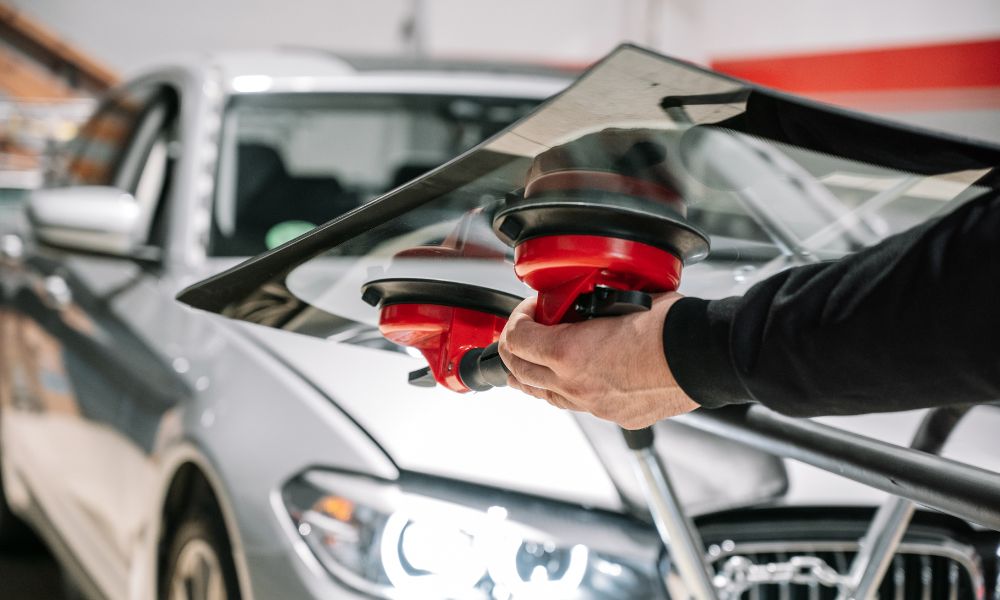Exploring the Various Types of Automotive Glass

In the ever-evolving landscape of automotive technology, one often underappreciated aspect stands out: automotive glass. From the windshield that shields us from the wind and debris on the road to the windows that provide panoramic views of the surroundings, automotive glass plays a pivotal role in enhancing both the safety and aesthetics of our vehicles.
In this comprehensive guide, we embark on a journey to explore the various types of automotive glass, their unique characteristics, and the vital role they play in our driving experience.
The Importance of Automotive Glass
Automotive glass, often taken for granted, is a fundamental component of modern vehicles that carries significant importance for various aspects of driving safety, comfort, and aesthetics. From windshields to side windows and rear windows, each piece of automotive glass serves a specific purpose that goes beyond mere visibility. Let’s delve deeper into the crucial role that automotive glass plays:
1. Safety and Structural Integrity
Perhaps the most vital role of automotive glass is ensuring the safety of vehicle occupants. In the event of a collision or accident, automotive glass acts as a barrier that prevents passengers from being ejected from the vehicle. Windshields, in particular, play a critical role in maintaining the structural integrity of a vehicle’s cabin during a rollover or frontal impact. Modern windshields, often made of laminated glass, are designed to stay intact even when shattered, preventing large, sharp glass fragments from harming occupants.
Additionally, side windows made from tempered glass are engineered to break into small, granular pieces upon impact, reducing the risk of severe injuries caused by sharp shards. This feature is especially crucial during emergencies, allowing occupants to escape the vehicle quickly if needed.
2. Visibility and Driver Awareness
Unobstructed visibility is paramount to safe driving. Windshields, free of cracks, distortions, or obstructions, provide drivers with a clear view of the road ahead, enabling them to anticipate potential hazards and make split-second decisions. Scratched or damaged glass can hinder visibility, making it crucial to promptly repair or replace any compromised automotive glass.
Side and rear windows also contribute to driver awareness by allowing drivers to check blind spots and monitor traffic conditions from various angles. Ensuring the cleanliness and integrity of all windows enhances the overall safety of the vehicle.
3. Protection from the Elements
Automotive glass shields occupants from external elements, ranging from rain and snow to wind and airborne debris. Without proper protection, driving in adverse weather conditions can become not only uncomfortable but also hazardous. Windshields equipped with wipers and washer fluid systems are essential for maintaining clear visibility during rain or snowfall, preventing accidents caused by reduced vision.
4. Comfort and Interior Environment
The type of automotive glass used can greatly affect the comfort of vehicle occupants. Tinted or privacy glass reduces the amount of sunlight entering the cabin, preventing the interior from becoming uncomfortably hot and reducing the need for excessive air conditioning. This not only enhances passenger comfort but also contributes to improved fuel efficiency by reducing the load on the vehicle’s climate control system.
5. Noise Reduction and Acoustic Comfort
Automotive glass also plays a role in reducing exterior noise, contributing to a quieter and more enjoyable driving experience. Acoustic glass, featuring multiple layers and special interlayers, effectively dampens road noise, wind noise, and other external sounds. This feature is especially valuable during highway driving and in urban areas, where noise pollution can lead to driver fatigue and stress.
6. Aesthetics and Vehicle Design
Beyond its functional roles, automotive glass also contributes to the overall aesthetics and design of a vehicle. Tinted, frosted, or even smart glass options can enhance the exterior appearance, making the vehicle more visually appealing. The design of glass panels, along with their proportions and angles, can influence the vehicle’s overall aesthetic balance and attractiveness.
Types of Automotive Glass
1. Laminated Windshields: Safety First
At the forefront of automotive glass safety technology lies the laminated windshield. Composed of two layers of glass with a layer of polyvinyl butyral (PVB) interlayer in between, laminated windshields provide exceptional impact resistance. In the event of a collision, the interlayer helps prevent the windshield from shattering into large, dangerous fragments, thus minimizing the risk of injury to occupants.
One of the significant advantages of laminated windshields is their ability to maintain visibility even after impact. While cracks may appear, the glass remains intact, ensuring that the driver’s vision is not compromised. Additionally, the PVB layer acts as a sound insulator, reducing outside noise and contributing to a quieter cabin.
2. Tempered Side Windows: Strength and Safety
Tempered glass is another critical player in the automotive glass arena, particularly for side windows. Tempered glass is created through a process of rapid heating and cooling, which imparts high strength and durability. When tempered glass breaks, it shatters into small, granular pieces, reducing the risk of serious injury compared to large, sharp fragments.
Tempered side windows are designed with safety in mind. In the unfortunate event of an accident, they can be easily broken to facilitate emergency exits for occupants. Furthermore, the process of tempering increases the glass’s resistance to extreme temperatures, making it less likely to crack due to sudden changes in temperature.
3. Privacy Glass: Balancing Aesthetics and Functionality
Privacy glass, often used for rear windows and back seats, is designed to offer passengers a higher degree of privacy while enhancing the vehicle’s aesthetics. Privacy glass can be either tinted or coated with a thin layer of material that reduces the visibility from outside while allowing occupants to see clearly from within.
Tinted privacy glass not only adds a touch of sophistication to a vehicle’s appearance but also contributes to temperature control within the cabin. By blocking a portion of the sun’s rays, privacy glass helps maintain a comfortable interior temperature, reducing the need for excessive air conditioning.
4. Smart Glass: The Future of Automotive Transparency
As technology continues to advance, so does the potential for innovation in automotive glass. Smart glass, also known as switchable glass or electrochromic glass, is a prime example of this advancement. Smart glass can change its transparency level with the application of an electric current. This technology offers drivers and passengers the ability to control the amount of light and heat entering the vehicle at the touch of a button.
Smart glass has numerous applications, from adjusting the level of sunlight penetration to enhancing privacy by darkening windows when needed. It can also reduce glare, thereby improving visibility and reducing eye strain during daytime driving. While currently more commonly found in luxury vehicles, the increasing affordability and interest in this technology hint at a future where smart glass becomes a standard feature.
5. Acoustic Glass: Silencing the Roads
For those who seek a quieter and more serene driving experience, acoustic glass presents an innovative solution. Comprising multiple layers of glass and a special acoustic interlayer, this type of glass effectively reduces external noise, making for a quieter cabin environment.
Acoustic glass is particularly beneficial for urban commuters who regularly contend with traffic noise. It contributes to a more comfortable and peaceful journey, allowing occupants to better enjoy music, conversation, or simply the tranquility of the drive. Additionally, the improved insulation provided by acoustic glass can enhance the overall energy efficiency of the vehicle’s climate control system.
Conclusion
In the world of automotive engineering, every component serves a purpose, and automotive glass is no exception. From the safety-centric laminated windshields to the aesthetic and functional benefits of smart glass, each type of automotive glass plays a unique role in enhancing the driving experience.
The evolution of glass technology continues to shape the way we interact with our vehicles, prioritizing safety, comfort, and aesthetics in equal measure. As we look ahead to the future, it’s clear that the glass we see through is no longer just a window—it’s a gateway to innovation and a clearer, more connected driving experience.
Related Articles

Unlocking the Mystery: How Long Can Car Tyres Last?
Understanding how long your tyres can last and the factors that influence their lifespan is crucial for ensuring a smooth and secure driving experience. Join us as we explore the various elements that determine tyre longevity, from driving habits and road conditions to maintenance practices and tyre quality. Get ready to unlock the secrets behind how long your car tyres can truly last.

Tesla Self-Driving Explained: What You Need to Know
While Tesla’s advancements in this field are impressive, it’s crucial to understand the capabilities and limitations of its self-driving system. In this comprehensive guide, we delve into what Tesla’s Full Self-Driving entails, separating fact from fiction and shedding light on the realities of autonomous driving in today’s automotive landscape.

How Often Do Car Dealerships Get New Inventory: A Comprehensive Guide
One common question among car buyers is, “How often do car dealerships get new inventory?” Understanding this aspect can help potential buyers plan their purchase timing and negotiate better deals. In this comprehensive guide, we delve into the intricacies of inventory management in car dealerships and explore the factors that influence the frequency of new inventory arrivals.

Unveiling the Power-Packed Nissan Ariya NISMO: A Japanese Sensation
From enhanced power outputs to finely-tuned performance, join us on a journey through the electrifying transformation of the Nissan Ariya, set to leave an indelible mark on the roads of Japan and beyond. The countdown begins to the arrival of the Ariya NISMO in the United States, as we explore the electrified future of high-performance electric SUVs.




